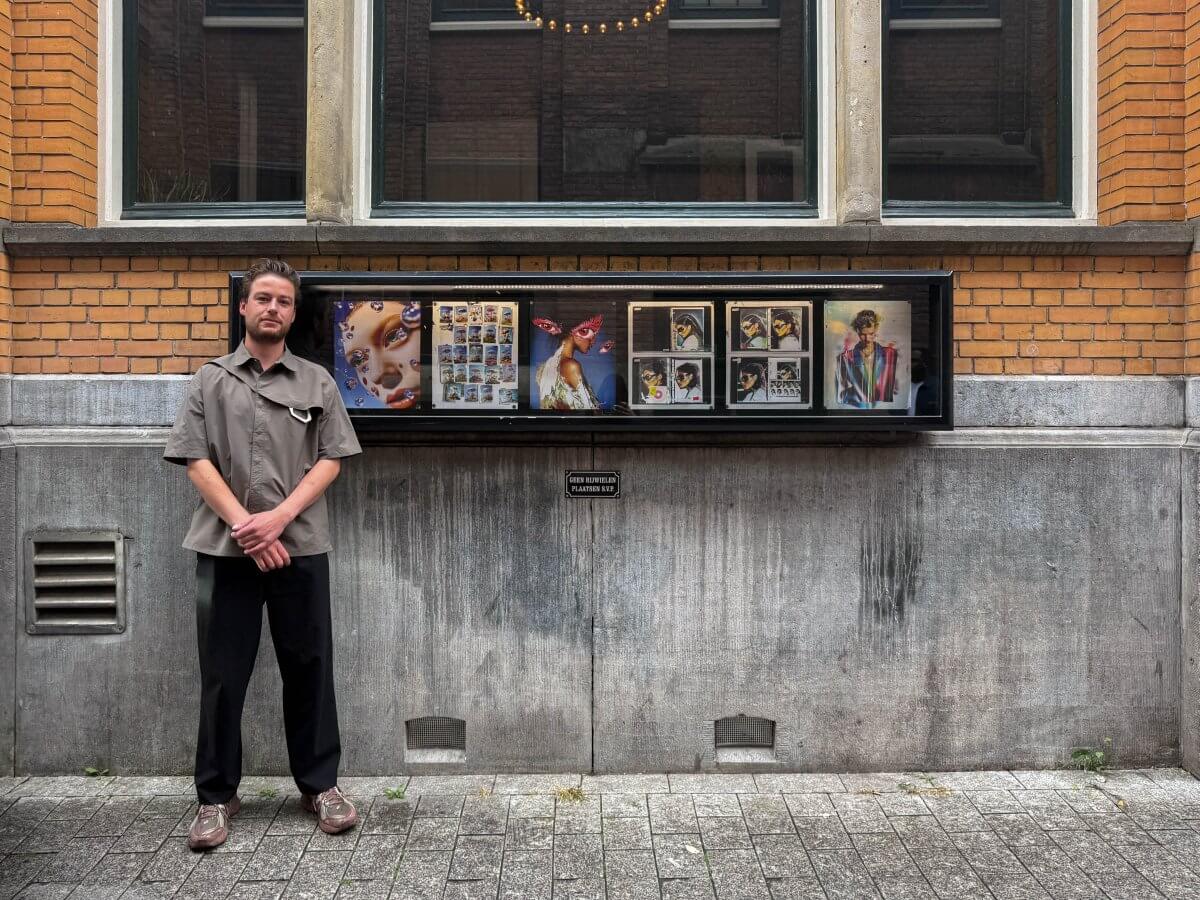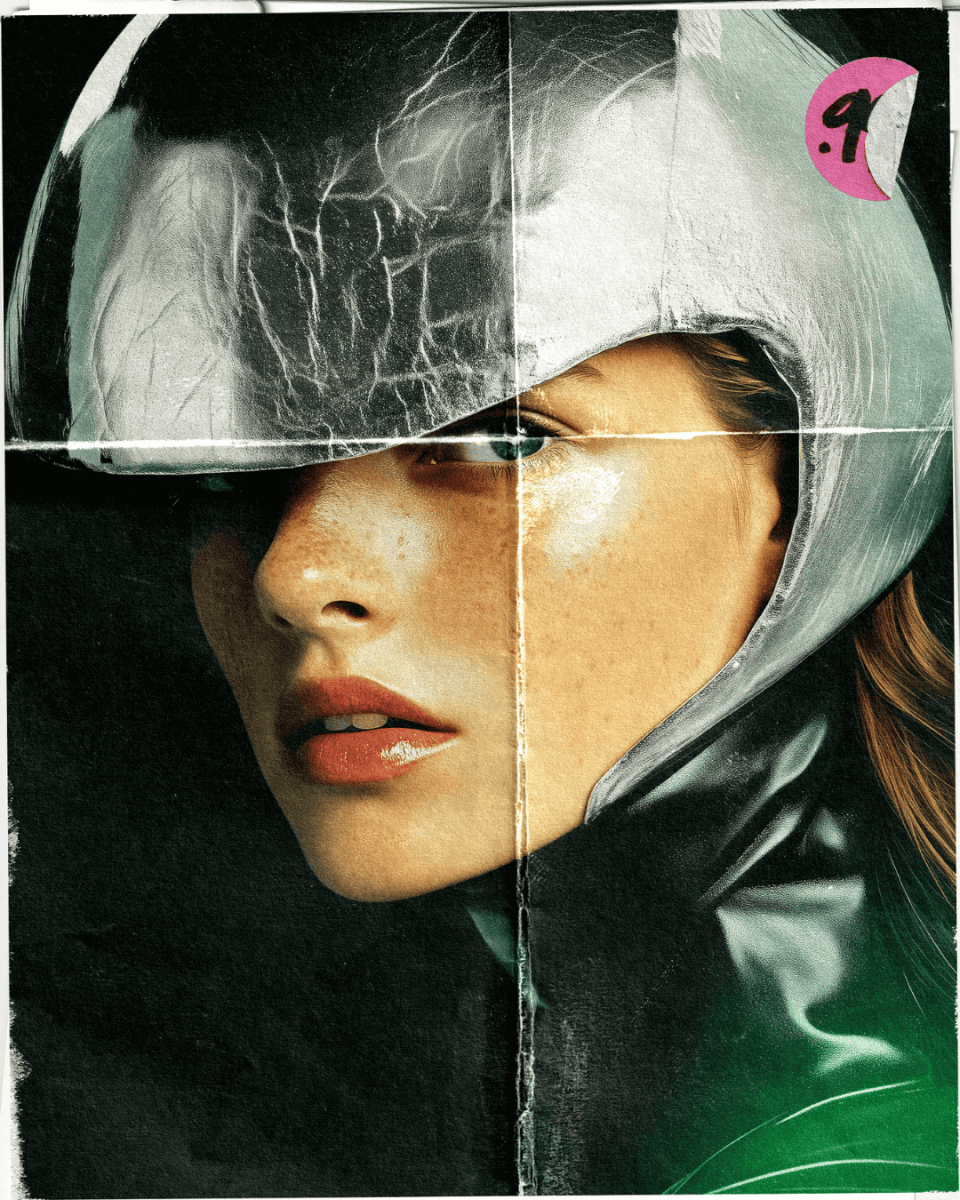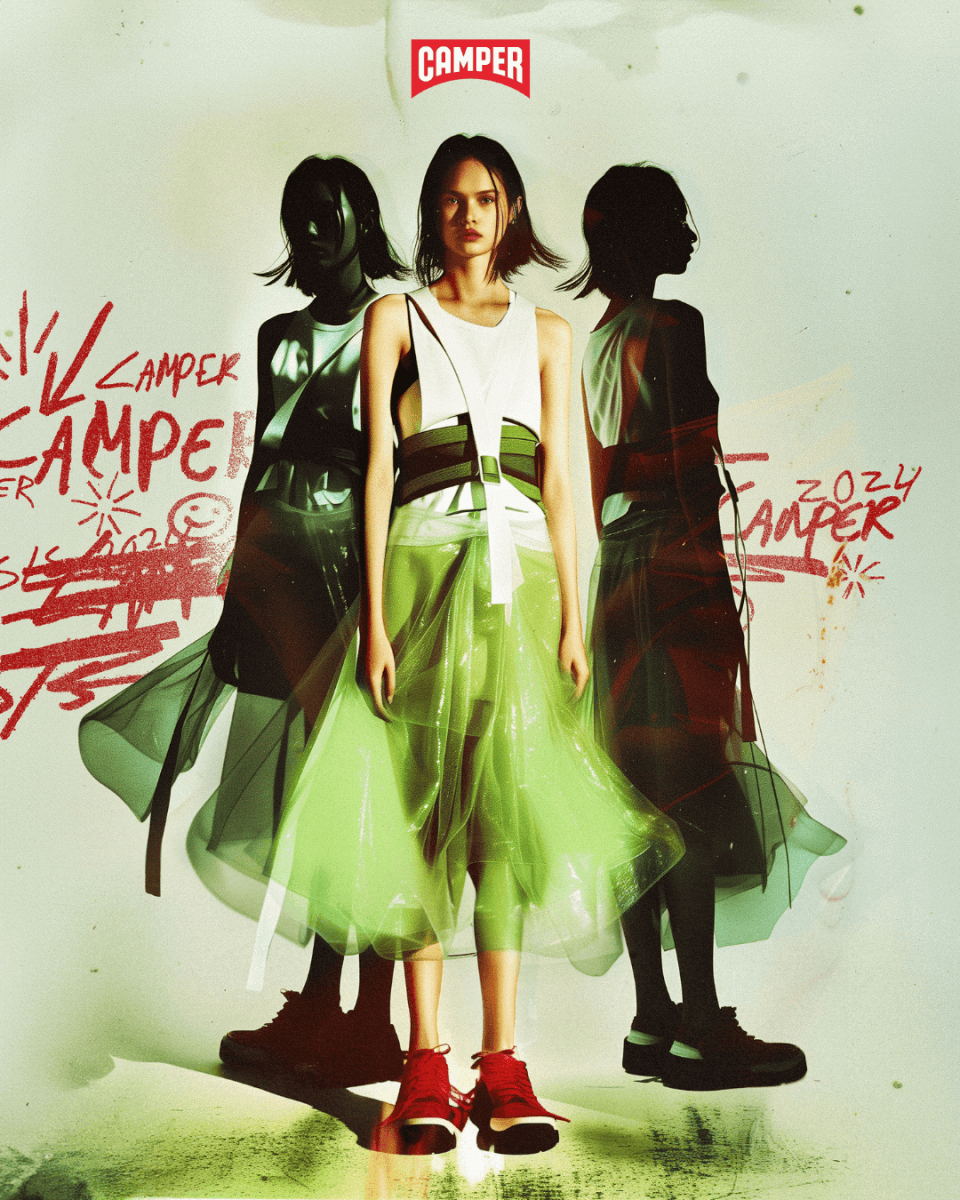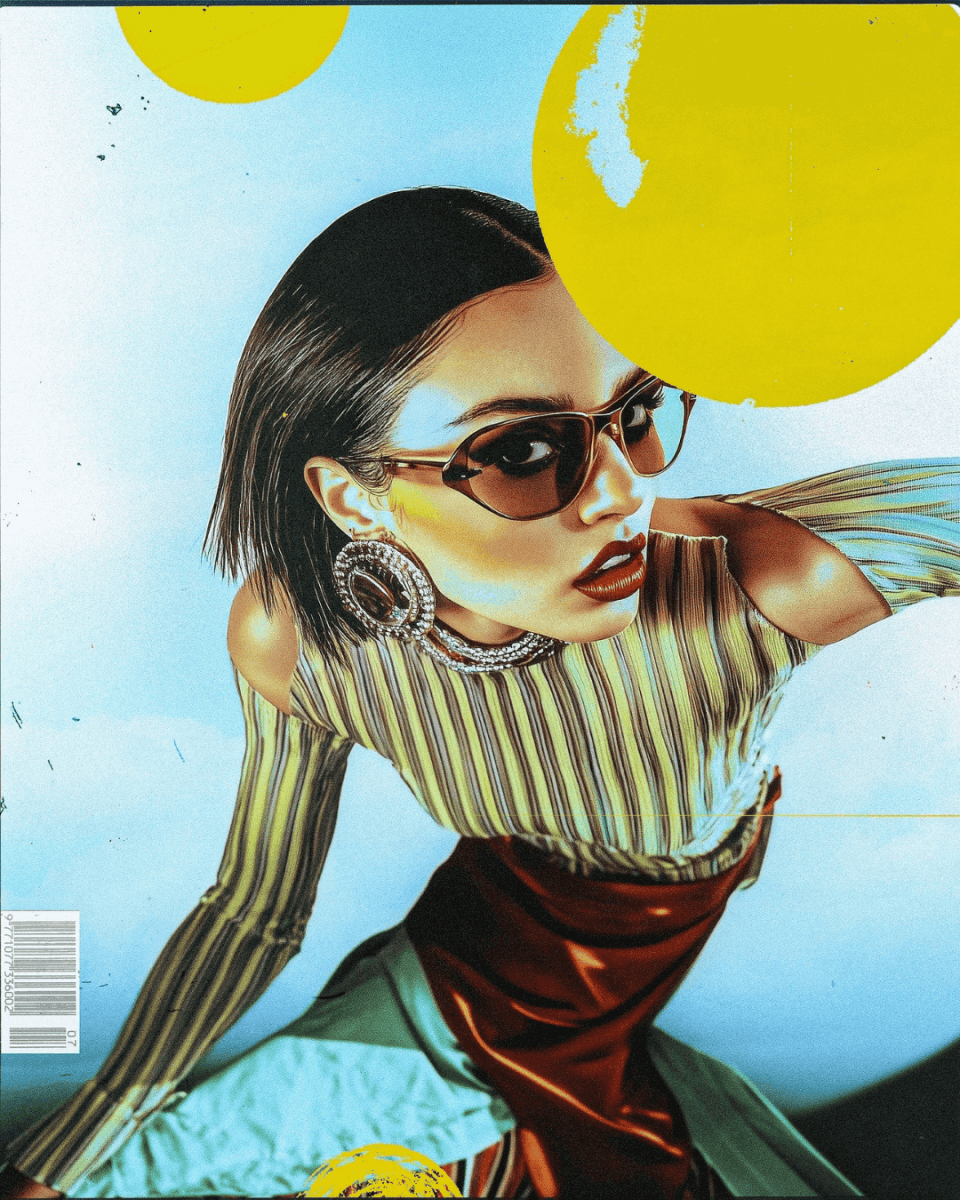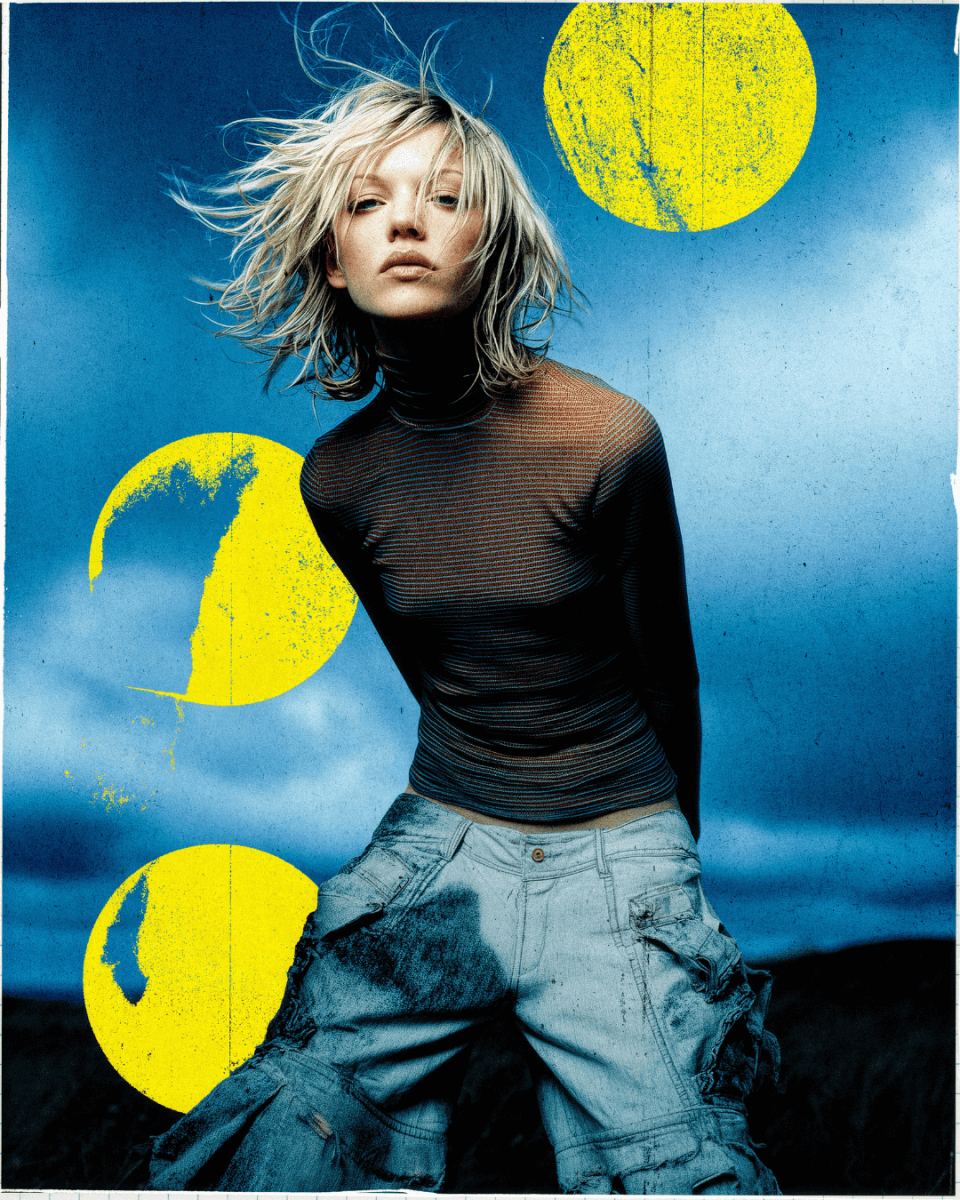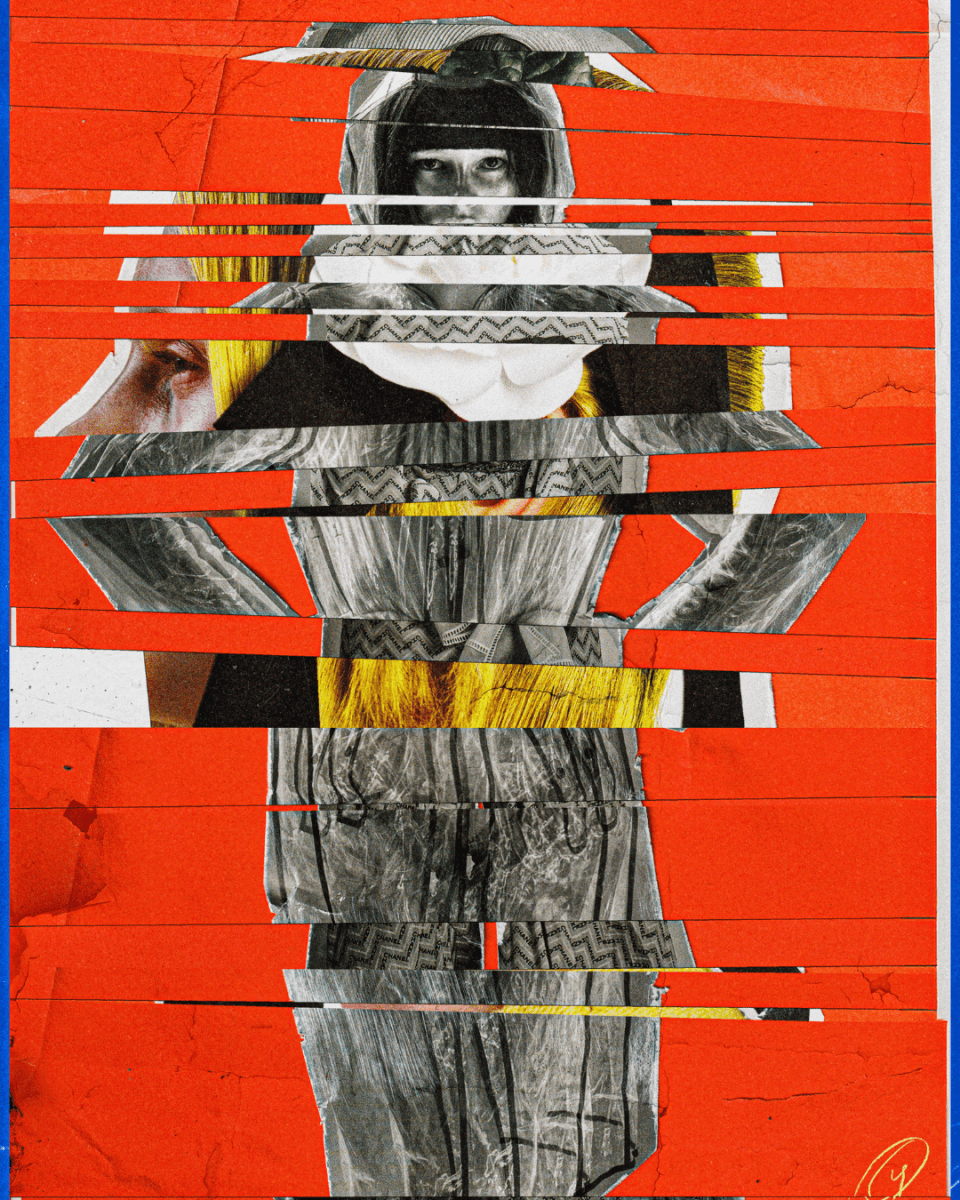Could you complete the following sentences?:
If I could choose any place in the world to exhibit my art, it would be…
MoMA (Museum of Modern Art) in New York.
If I could choose one person to give a piece of my artwork to, it would be…
Samuel Ross (fashion designer, creative director, and artist)
If I’m not feeling inspired but still want to create something, I…
do absolutely nothing, or I simply start by collecting and combining beautiful images—sometimes old work, sometimes scanned visuals from my own archive—to come up with surprising new creations. That process often leads to new insights, which in turn spark creativity. These days, I also literally blend two images using AI in Midjourney, to generate an entirely new image I can then play with further.
Four artists who perfectly align with my work are…
Blood Orange, Sigur Rós, Zimmer90, and Bakar.
Many people, especially within the creative sector, are wary of artificial intelligence. Yet you integrate AI into your art. What’s your perspective on the role of AI in relation to art and creativity?
At first, I was quite skeptical. But soon I felt: “Use it, embrace it.” See it as a tool to make your work more interesting and more personal.
Whereas years ago I would often use images from (old) fashion magazines as a base for photography, I now have the ability to create those visuals myself. This gives me much more control over the final result—without having to rely on other people’s photography or work.
On top of that, AI tools have been developing so rapidly that they increasingly allow me to give my images that extra dimension—even without being a professional in, say, animation. It helps bring static work more to life.
At the same time, I’ve noticed that I’ve become a bit more cautious lately, precisely because everything is changing so exponentially fast. But I think that’s where the challenge lies: how do you ensure the human touch remains palpable?
Do you have experience exhibiting in physical spaces? If so, how does that compare to presenting your work online, for example via social media?
I do have some experience, but it’s quite limited. I think that has more to do with who I am as a person than with the work itself. Exhibiting in a space or at an event adds a whole different dimension—the social aspect, the potential of explaining your work or vision. But personally, I prefer to leave that up to the viewer. Often, I’m already mentally onto the next idea or something that just inspired me.
By nature, I’m not someone who likes being in the spotlight or stepping onto a stage with pride. I prefer to let the work speak for itself. What I do find really exciting is when my work becomes tangible—nicely printed, for example—and gets a real place in a space, or in something like a magazine.
Can you walk us through your creative process, from concept to final piece?
I usually work quite intuitively, in the moment. I don’t think too long about a fixed concept, but instead come up with ideas while I’m creating. Of course, it’s sometimes fun to incorporate specific techniques or layouts I’ve seen that inspired me.
Whereas years ago I would typically start by collecting and tearing out images from magazines, books, and other materials, these days I work more with photos from my own shoots with others—or with images generated through AI. That last part has almost become an art form in itself: it takes time and intuition to train and guide AI in a way that actually delivers the result you envision.
What hasn’t really changed over the years are the steps that come next.
This is what I see as the most fun ‘phase’: printing, scanning, combining, pasting, and playing around with all kinds of analog materials. Step two in that phase is digitally bringing everything together again (which I almost always do in Photoshop). There, I still have full freedom to play with the creation, color, and composition. And really dive into layering—sometimes not even visible in the final piece, but each creation often contains dozens of layers with specific elements or effects.
And that’s how I arrive at a final piece, which I usually retouch a bit here and there.
Lately, I’ve also enjoyed finding ways to give the work even more dimension—through animation, for instance, or by photographing the work again in a specific way.
In addition, I’ve noticed that in recent months, I’ve more often preferred to create a work as part of a small series.
text continues below the video
